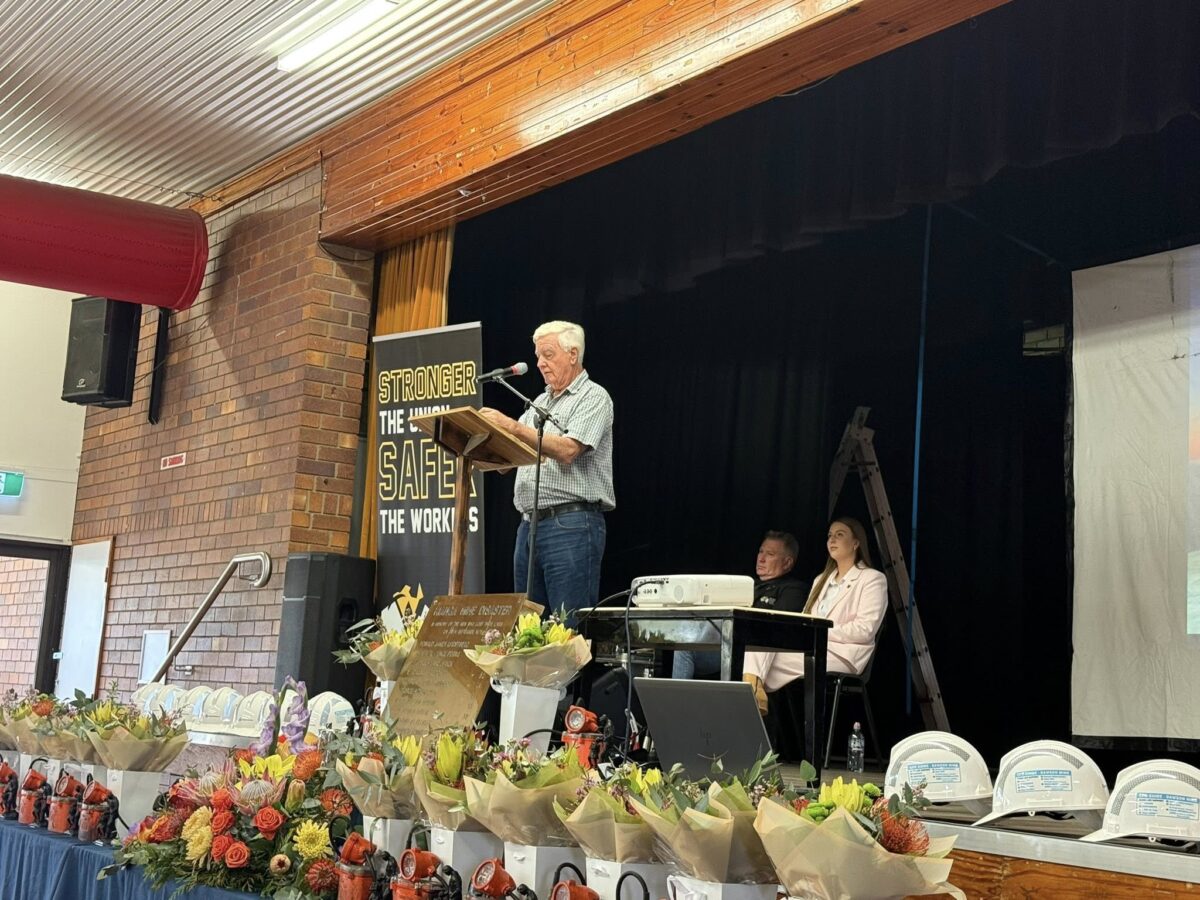September 24, 2025
The below is the transcript of a speech from Bill Allison, made on the 50th anniversary of the Kianga Disaster.
In the early hours of Saturday morning on the 20th September 1975, I found evidence of smoke in the main return airway of the mine during a pre-shift inspection. Management was consulted and their opinion was that this was the early stages of spontaneous combustion, because nothing had been detected during the previous afternoon shift.
Management made the decision to seal the three roadways to save the mine. That was a fatal decision. The heating of the coal had reached ignition temperature by the late afternoon. With the drop in the barometric pressure at around 5pm, all the elements for an explosion occurred. To make matters worse stone-dusting, which prevents the ignition of coal dust, had not been carried out in the weeks prior, resulting in a gas coal dust explosion. far more devastating. Damage to the mine and the strong possibility of a second explosion prevented any attempt by mines rescue to enter the mine.
Sadly, there was no other option than to bulldoze the entries to prevent further explosions.
When I look at the plaque that we did for our fallen comrades, I think my name should have been on there. I was asked to stay back and help, but it had been a long shift for me, so I went home just before the explosion.
It was a difficult time for me, in the days, weeks and years following. If I had stayed, might I have done something different? Should I have identified the risk more thoroughly? Our jobs were at stake – we needed to seal the area to save the mine, that was the combined thought of all of us. I remember Gerry Tzackervich asking me, when we were underground that day. “Why were there no bosses underground this time?” I remember telling him “Maybe they know more, than we do.”
Those men and their families paid a terrible price. I often think of the lovely life that I have had over those 50 years, that they missed out on. I think of my children and grandchildren, who love and enjoy my company, that their children and grandchildren have missed out on. I think of the parents who lost their sons and the women who lost their husbands that fateful day. Not able to recover the remains of those men just made the grieving even worse for those families.
A lot has happened in the coal industry to improve safety since that time, but more needs to be done. At this point I would like to honour the roll of the mining union. When I started working at Avondale colliery in the Wollongong area in February 1961, the last of the hand mines, the manager told me to look after the horse I was using, because that horse was more valuable than me. He could get another one of me tomorrow, but the horse he had to buy. That was the attitude of the coal barons at that time, but I doubt much has changed.
I soon leaned why we needed a union, and the benefits of being in a great union. The mining union has been the one that has fought to improve safety in our mines. Nearly every safety improvement put up by the union check inspectors, was opposed by mining companies. I remember the struggle we had to get gas chromatographs at every underground mine, so we could identify the early stages of a heating. Had this been available and used at Kianga, those thirteen men would never have died.
Sadly, when the opportunity arose to use this technology, at Moura number 2 mine in 1994, it was never used by management. Management suspected they had a heating in a sealed section of the mine, but they refused to use the technology that was available to them. Eleven miners might lives might have been saved had they done so.
It’s been difficult for me to talk about this today, but I’ll never forget those comrades who died that day, trying to save a mine so that we would keep our jobs. That was never to be. Rest in peace my dear friends.

